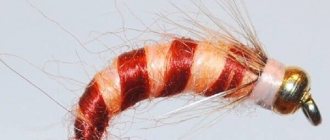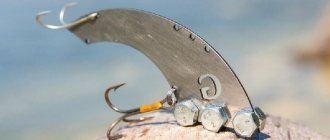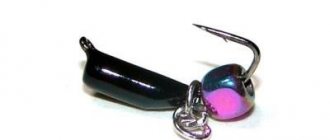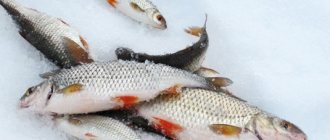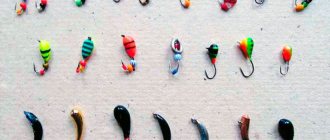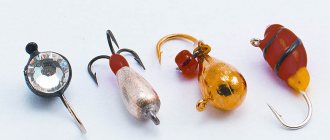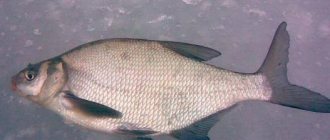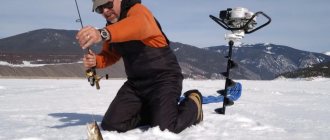Winter mothless
Fishing with a reelless bait works on different principles than a classic jig. Sometimes beginners fail to immediately comprehend these nuances, so they are haunted by failures. However, with the right approach, a reelless jig is often not inferior to, and sometimes even superior to, an attached jig. It's all about the right tactics, equipment, bait play and constant practice on the pond. Winter fishing with a reelless bait is developing in full swing, finding more and more fans. And fishing with nail balls (including cubes), along with little devils, has practically become a separate area of such fishing. Some fishermen fish only with this group of jigs, covering all their needs for fishing conditions with the right set of gear.
Jig "nail ball": description
The design of the nailball jig is quite simple, since it consists of a large (relatively) ball made of metal, glass or plastic, mounted on a hook. A small body is attached to the ball. In appearance, the jig resembles an ordinary tadpole and is quite attractive to fish.
Advantages of bait
The nail ball jig works great on the first and last ice. The “nail ball” is considered a universal bait for fishing both in shallow and deep water.
According to some estimates, the fish begins to be interested in the ball, which has an attractive appearance. Some anglers claim that fish are attracted to the sound made by the bait when the ball contacts the hook. Some fishermen have noticed that the “nail ball” is capable of moving not only vertically, but also horizontally, which certainly attracts fish.
In this regard, it is not relevant to say or assert what exactly affects the catchability of the jig, since there is no evidence base. As for another category of fishermen, they do not bother themselves with the reasons for the remarkable catchability of the “nail ball”, but simply take it and enjoy the fishing process itself.
What can you catch with a nail ball?
The jig is so versatile that you can use it to catch not only perch, but also other peaceful fish. The catch can be not only tangible, but also varied. Here, a lot depends on the quality of the bait, as well as the experience of using it directly on the pond. After all, the fish does not just rush to the gliding bait, it should be interested in certain movements that only an experienced fisherman is capable of.
Factors affecting fish
Operating factors of nail ball catchability:
- The bead itself attracts fish with its color and round shape.
- The knock of the ball on the bait during the game.
- Nodding the top of the nail down when retrieving (due to the high center of gravity of the jig).
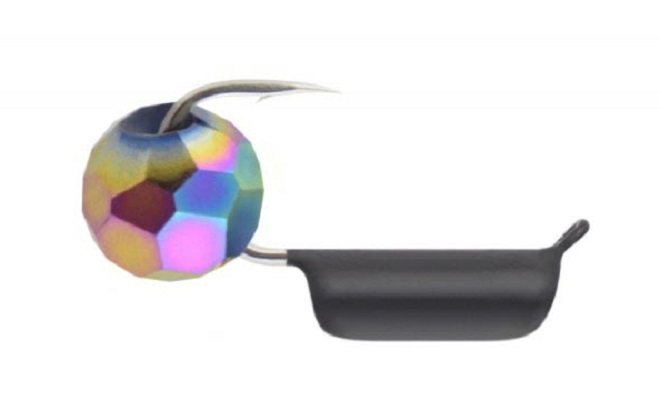
The game of a nail ball with a tungsten ball and, for example, a glass cat's eye, differs due to the difference in the weight of the pendant. It is generally accepted that glass beads (multi-colored) work better in shallow water, and heavy brass, tungsten or faceted metal (shiny) work better in depth. However, this is an experimental question. The weight of the suspension affects the game, but these differences are subtle, and they affect the bite. Therefore, the set should contain various rewinders - it is not known in advance what will work best on the reservoir today.
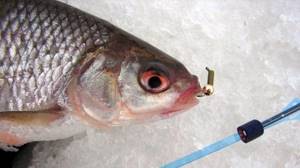
What does a working nailball jig look like?
Due to the hype, the market has become filled with various bait options. However, that very correct nail ball remains unchanged. You should not fall for marketing and advertising tricks. The set necessary for fishing has long been known. Experiments waste time and money. As an example of an ideal jig, consider the “Trick” nail balls. These designer jigs are made taking into account all requirements.
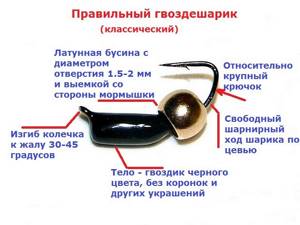
However, they have an appropriate price. If you search in fishing stores or on the Internet, you can find decent baits cheaper. The highest quality products at this moment are Mast Iv nail balls (Ivanovo), Nizhny Novgorod and designer jigs (Ulovka and others). The mothless set is assembled from mostly black jigs, you can add a few dark green ones and a couple of brightly colored ones. Balls - brass or cat's eye. Cat's eye jigs are made not only with green beads - there is a wide range of colors. But the most popular ones are green (for roach), orange (crucian carp, perch) and white (pearl, milky) for bream.

Studs with Brass Ball Trick
Classics and modifications
Reviews from experienced wormers say that the main emphasis should be on using classic black jigs with brass balls. This option is time-tested and works in all conditions. Silver balls, two beads, an earring pendant are additional options that do not always work. In muddy water, sometimes a sharp-eyed nailball with a provoking bright green bead shows itself, especially on active pre-spring roach. Shimmering polyhedrons perform well at great depths with sluggish play.
Therefore, we rely on the classics as a basis. We test other options in conditions when the classic does not work. This part of the standard reelless tactics is a constant search for both the place and the working bait, its game.
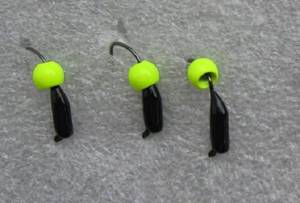
Vigorous eye
Design Features
The nailball jig was made on the basis of the good old post, adding a large bead to the hook. As they say, this jig was developed as a result of experiments by Dzerzhinsky fishermen in the vast Volga. Since then, reviews of jigs and nail balls have been positive - these baits, with the right approach, always catch, even in the dead of winter. Time has shown which shapes, colors, characteristics of the bead and body of the jig work. It turned out that the most universal shape of the jig is a nail, a brass (golden tungsten) or green (cat's eye) bead and a black (dark green) color of the bait. This is a definite plus - you don’t need to experimentally try out hundreds of reelless options on ice. You take a standard black nailless nailball (brass or cat's eye) and catch it. Experiments are carried out with the game, without bothering with changing baits.
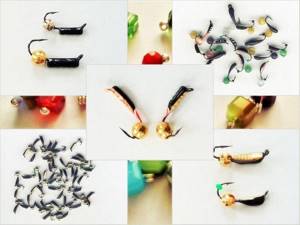
What does a working nailball jig look like?
Due to the hype, the market has become filled with various bait options. However, that very correct nail ball remains unchanged. You should not fall for marketing and advertising tricks. The set necessary for fishing has long been known. Experiments waste time and money. As an example of an ideal jig, consider the “Trick” nail balls. These designer jigs are made taking into account all requirements.
However, they have an appropriate price. If you search in fishing stores or on the Internet, you can find decent baits cheaper. The highest quality products at this moment are Mast Iv nail balls (Ivanovo), Nizhny Novgorod and designer jigs (Ulovka and others). The mothless set is assembled from mostly black jigs, you can add a few dark green ones and a couple of brightly colored ones. Balls - brass or cat's eye. Cat's eye jigs are made not only with green beads - there is a wide range of colors. But the most popular ones are green (for roach), orange (crucian carp, perch) and white (pearl, milky) for bream.
Studs with Brass Ball Trick
The right choice is the key to successful biting
The basis of the set is black carnations of various weights. The most popular size of a nailball jig is medium, 0.35-0.6 grams. Pendants are right on the hook, not the “earrings” that fill the stores. The basis of the arsenal consists of black nails with brass balls (silver or multi-colored ones work worse), several with cat's eye beads (green, a pair of white, orange) and ribbed decoys (faceted balls, nail cubes). You also need a couple of bright acid columns in stock - someday they will help out. So, the base is a black nail, the bead is brass 3-4 mm in diameter (golden fly fishing tungsten head), green cat's eye. The rest is within the framework of experiments.
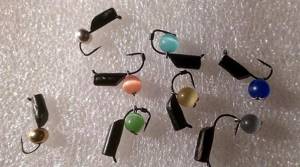
Various pendants - standard and “earring”
In the dead of winter, it is the black color of the jig that works best. This hides the size of the bait in the water; the fish sees only a light ball. For active biting in the spring or in the first ice, jigs with decorations (sparkles on the body), as well as multi-colored variations, work well. In this case, the fish bait is perceived as an integral, larger object.
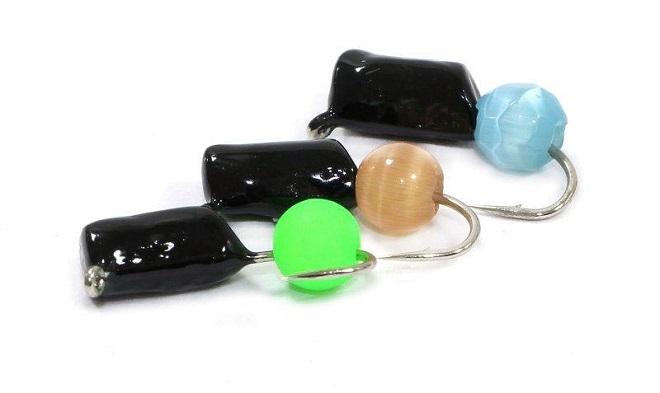
Nails are made of tungsten or lead, the former being correspondingly heavier. Nail balls have a relatively large hook. Grip is better with larger hooks. On the right nail ball, the bead is made with a relatively large hole with ground off ends - this allows the ball to slide smoothly along the hook and accurately tap the body of the jig when playing. Accordingly, the distance between the forearm and the sting and the bend of the hook are selected so as not to limit the hinge of the bead.

Factors affecting fish
Operating factors of nail ball catchability:
- The bead itself attracts fish with its color and round shape.
- The knock of the ball on the bait during the game.
- Nodding the top of the nail down when retrieving (due to the high center of gravity of the jig).
Rainbow faceted ball (chameleon)
The game of a nail ball with a tungsten ball and, for example, a glass cat's eye, differs due to the difference in the weight of the pendant. It is generally accepted that glass beads (multi-colored) work better in shallow water, and heavy brass, tungsten or faceted metal (shiny) work better in depth. However, this is an experimental question. The weight of the suspension affects the game, but these differences are subtle, and they affect the bite. Therefore, the set should contain various rewinders - it is not known in advance what will work best on the reservoir today.
Balloons
So, the direct working element of the nail ball is the bead itself. The studs themselves in a fisherman's set can be identical in shape, differing only in weight. Their main function is to add mass to the total weight of the jig for proper play and quick delivery of the ball to the desired fishing horizon. It is better if the ball hole is counterbored, and the part adjacent to the jig is recessed (for better contact and knock).
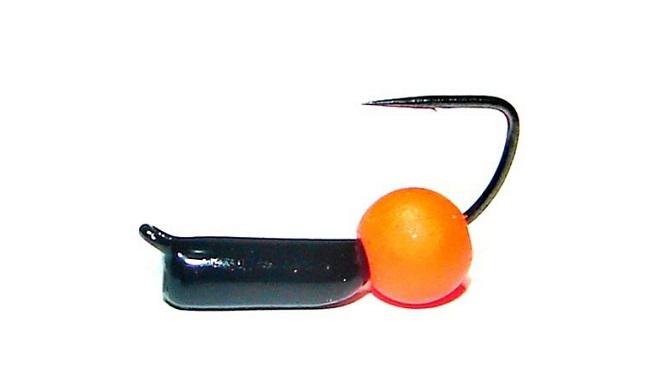
Mandarin for crucian carp and perch
The common earring pendant also works for a good bite, so you can still stock up on a couple of jigs of this configuration. Now there are many offers on the market with beads made of metal, glass and plastic. In recent seasons, nail cube jigs or faceted nail balls have been gaining popularity. The multifaceted nail ball sparkles in the depths and creates other vibrations at the micro level. Basic set of pendants:
- Most jigs are brass balls and green glass ones.
- Several white, orange cat eyes.
- A pair of cubes or faceted balls.
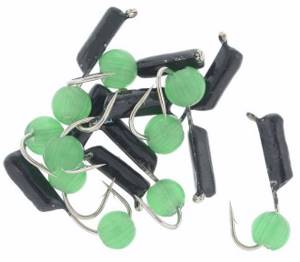
cat's eye
Classics and modifications
Reviews from experienced wormers say that the main emphasis should be on using classic black jigs with brass balls. This option is time-tested and works in all conditions. Silver balls, two beads, an earring pendant are additional options that do not always work. In muddy water, sometimes a sharp-eyed nailball with a provoking bright green bead shows itself, especially on active pre-spring roach. Shimmering polyhedrons perform well at great depths with sluggish play.
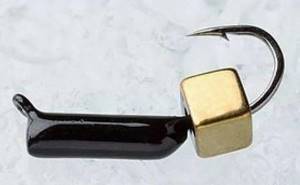
Clove cube
Therefore, we rely on the classics as a basis. We test other options in conditions when the classic does not work. This part of the standard reelless tactics is a constant search for both the place and the working bait, its game.
Vigorous eye
What kind of fish can it be used for catching?
The concept is often found on the Internet - a nail-ball jig for perch, but in reality the bait is universal, it often leads to the capture of not only perch, but also crucian carp, roach, and sorb. Ruff, rudd, scavenger and other types of small fish are found as bycatch, which is not always desirable. Such baitless baits lead to the capture of a variety of fish - both predators and omnivorous species.
Important! In order for reelless jigs to be effective, it is important to ensure an interesting game of the bait and use a high-quality spinner. Such baitless baits lead to catching a variety of fish.
Fishing with a Nailball - video

The Gvozdesharik is great for catching perch; bream and roach love it. When on YouTube you see headlines like: “I only caught this jig with this jig,” “This jig will not leave you without fish,” “The jig is a fish killer,” “It bites in any hole!” - you understand that the author knows how to not only catch fish, but also write attention-grabbing headlines. Usually we are talking about fishing with a reelless jig - with Gvozdesharik, Chertik or Uralka.
We have prepared a selection of the following videos:
What is it like?
A cylindrical weight attached to the shank of the hook, a bead moving freely along the hook, the head of the hook bent at an angle of 45° to the sting.
Weight
The deeper the bait is supposed to be lowered, the heavier it should be.
In strong currents, jigs weighing from 1 g are used.
| Depth, m | Jig weight, g |
| 1-4 | 0,2-0,4 |
| 4-6 | 04,-1,4 |
| 6-8 | 0,8-2 |
| 8-12 | 2-3 |
| 12-16 | 2,5-5 |
| >16 | >3 |
Weight of a cylinder with a diameter of 3.5 mm and a length of 10 mm:
- Copper 0.86 g;
- tin 0.7 g;
- lead 1.1 g;
- tungsten 1.9 g.
Beads and balls
For a heavy jig, it is best to use a tungsten ball with a flared hole . The ball is put on the hook through the sting on the side of the hole with a larger diameter. To insure against the ball falling off the hook, you can put a cambric over the tip, slightly heating it, or wind a woolen thread.
For a light jig, a bead made of plastic or stone . The hole in the bead can be flared with a round file by inserting it into the drill chuck.
Balls can be worn:
- Through the point of the hook, having previously flared the hole of the bead.
- Through the eye of the hook before soldering the weight.
- Cutting the hook into two parts and then soldering both parts to the weight. In this case, you can put on a ball with a small hole.
- At any time you can put a bead on a hook by making a small loop on the bead from a wire threaded through the hole of the bead. (earring method).
Jig color
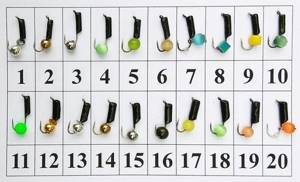
Black and dark green jigs are considered catchable.
The color of the bead affects the attractiveness of the jig for a particular fish:
- Perch also love green beads, and they especially like the green cat's eye bead;
- bream, bream, roach love silver or golden color;
- crucian carp prefers an orange ball;
- black color is sometimes attractive to all fish.
fishing line
The thinner the line, the more invisible it is, the better the performance of the bait.
For winter fishing, you can count on a maximum weight of 1.5-2 kg. Accordingly, the monofilament should be 0.08-0.12 mm.
Fishing rod
An ordinary balalaika is the traditional choice of jigs.
Nod
Jig players love the spring from the alarm clock, which is quite justified. A flexible tape of 12-14 cm can provide any wiring.
The double-cone nod will require some skill in handling and modification of the regular nod. Can provide a more attractive game experience.
The nod can be made by cutting out a ribbon from a plastic bottle or an x-ray.
Equipment
Equipping a spooler with a nail ball follows the rules without a nozzle. Light tackle with a nod or nodless fishing rods are used. A set of fishing rods is prepared in advance - for each jig weight separately. There is no time to do bandaging and adjustments on a pond, especially in cold weather. It’s easier to take the finished tackle out of the box and use it right away. To start, 3-5 fishing rods with classics and a couple with modifications are enough.
A nailball, like any other rewinder, requires a thin, high-quality fishing line in the equipment. For most cases, a diameter of 0.1 mm is suitable, for large fish and heavy jigs - 0.12 mm. It is not recommended to bet thicker - there will be no correct game. The weight of the bait should completely straighten the line into a line. Over time, as you gain experience, it is better to generally switch to diameters of 0.08-0.09 mm.
A special part of the equipment is the nod for the rewinder. The simplest option for a nail ball is a nod made from X-ray film, lavsan or a plastic bottle. Next, you can try double-cone spring guards, dovewing or carbon (carbon). The requirements for setup and equipment are the same as for any reelless jigs. All this is described in detail at the links provided. The main thing in a reelless jig is the equipment that allows you to reproduce the correct game with a jig. An article about rigging reelless nodding fishing rods.
How to properly tie a nailball jig to a fishing line? There are several working methods for tying a rewinder to a fishing line. However, experienced bleeders claim that the most correct method is with a loop. With such a binding, the nail ball plays better, creating additional micro-oscillations of the upper part horizontally due to the hinge of the connection. The loop is made small - 5-10 mm, it is formed with a regular figure eight or Rapala knot. An article about the correct binding of rewindless reels.

Rapala knot
Device
Any type of fishing rod is suitable for this device. It can be used as a spinning rod or a simple fishing rod. It is more comfortable to fish with such equipment using a spinning reel and a feeder rod.
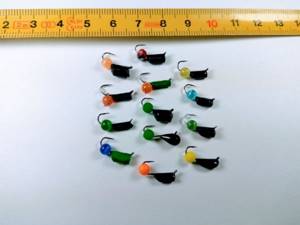
With this configuration, there is more opportunity to easily catch large fish and cast the bait further from the shore. A pacifier can be made from a simple cap.

The most catchy jigs
Nails, and a nail-ball and a nail-cube, for many anglers are the most catchy jigs that perfectly catch perch, roach, bream and other fish. Moreover, equipped with an “earring” type pendant (a bead suspended on a loop, a cat’s eye), they become reelless and the best jig for perch.

Earring type pendants
Many argue that Chertik is becoming the second most catchable jig after Gvozdikov. One can argue with this, but it is a fact that fishermen are increasingly using different Carnations instead of Devils. Perhaps this is a fashion trend, a temporary trend, and after a couple of years, Chertiki and Uralki will move Gvozdikov and return to their place in the fishermen’s boxes.
Devils, Uralkas, Nailballs - should be in the arsenal of the winter angler. Definitely, these are the most catchy jigs for perch and roach. They are quite versatile, but for successful fishing, you need to be able to select them correctly to the fishing conditions in terms of size, weight and color. And the most important thing in catchability is the playing technique.
Technique for playing with a jig like Gvozdik
The technique of playing with these jigs can be different; there is no strictly defined wiring that needs to be reproduced.
If fishing is carried out without a bait, then the retrieve must be done actively, with the bait rising up from the bottom and swaying with a fairly high oscillation frequency. You can try “dribbling” - a high-frequency game based on tapping the rod of a fishing rod between two fingers.
In general, playing with a Nailball should be the same as with other reelless jigs. You can see how this looks in practice in the video at the bottom of the article.
DIY nail ball (Nail cube)
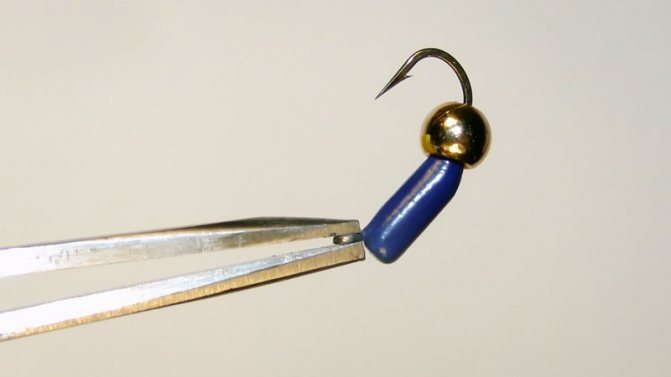
You can make a jig Gvozdik (Nailball, Nailcube) with your own hands - it’s not difficult, since the jig has a simple shape. They can be made from steel, brass, tin, tungsten - any available materials (copper wire, tungsten electrodes, bearing rollers, etc.).
Tungsten jigs cannot always be made at home. Tungsten is a very refractory and hard metal and is very difficult to cut. In order for tungsten to be soldered, it must undergo galvanic treatment - the application of a layer of another metal (nickel, copper). The advantage of a tungsten jig is its greater weight compared to jigs made of other metals.
The easiest way is to make nails by tinning a metal rod and soldering a hook to it, followed by painting, or from lead-tin alloys.
How to make a nailball jig with your own hands
What is needed for this
DIY jig "Nailball"!
To make the bait you will need tungsten balls or glass beads with a diameter of 2.8 to 4 mm, as well as a set of hooks No. 14-18.
Manufacturing technique
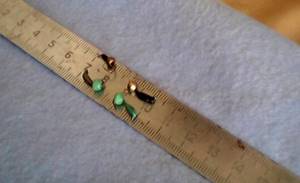
It is better to make the body of the spinner from tungsten wire of the required diameter. Steel wire will also work, but it has less weight, although a tungsten ball can compensate for the weight of the bait, depending on the material of the body.
The simplest option is to attach the hook to the body, but it is advisable to leave a gap for the ball to move. In this regard, the body of the bait should not extend beyond the bend of the hook. It is better to paint the finished bait in a dark, green or black shade.
Reelless jig Nailball, DIY Nailcube. How to make a jig.
Bait game
The frequency of movement of the jig should not exceed 350 movements per minute. When catching perch, you don’t have to invent any extraordinary movements, since this predator is quite primitive compared to other fish. When catching white fish, you will have to try a little with a set of movements. Usually, the movements do not stop even while the jig is lowering to the bottom. But do not forget about organizing pauses, otherwise productive fishing will not work.
When fishing for roach, it is better to lower the fishing rod vertically and play with the bait to obtain longitudinal and transverse movements, which attracts the roach more. Bites can be very neat and unnoticeable, the main thing is not to yawn.
When fishing for bream, it is advisable to raise the fishing rod at an angle of 150-160 degrees, and the vibrations are reduced to 150 per minute.
It is very important to choose the right nod that takes into account the weight of the jig and other fishing conditions. The best nods are those made from the spring of a mechanical watch.
Fishing tactics
Any fishing begins with identifying a promising place, that is, a place where active fish are located. The holes can be fed; it won’t hurt, although sometimes this is not required. The fishing process continues with a slow increase in the tempo of movements. If the fish leaves the hook, the bite will stop for a while. When fishing with a nail ball, such mishaps happen quite often due to the design features of the jig, since a fairly large ball makes effective hooking difficult. It is advisable to quickly pull the caught fish out of the water. This bait is preferred by perch located in coastal thickets, as well as roach, preferring a silver or golden hue. When fishing in summer, almost all the fish bite on dark baits.
In cases of unsuccessful use of this bait, you should not immediately reject it, but rather analyze your actions. It is quite possible that the game of the bait is not believable. In addition, you should experiment with coloring, offering the fish something extraordinary. As a rule, fish are unpredictable and do not always bite what is offered to them.
The ball must correspond to the size of the hook, especially since there must be enough space for it to move. A properly made bait works flawlessly, especially if you add some attractive element.
The Nailball jig will be an excellent bait. In addition, the “nail ball” is suitable for any type of fish. In this article we will not only talk about its advantages, among other baits, but also try to make such a jig ourselves.
Fishing rules
Catching pike perch using amphipods in winter + video
Procedure on the ice:
- Unwind the rod on which the nail ball is installed.
- Play with a nail ball in the water.
- To do this, you need to move the fishing rod on all sides of the hole.
- This needs to be done at certain intervals. In this way it will be possible to lure the fish, which will see the bait.
- When biting, a sharp hooking of the fish follows - one of the most difficult stages of fishing. After all, as was said, the fish easily comes off the hook due to improper hooking.
Important! Therefore, you need to hook it slowly, watching its body movements. If the bite is too sharp, slightly increase the pace of the hook, but under no circumstances make sudden movements.
So, by following all the rules, you can hope for a good bite.
Roach
Catching roach with a nailball jig is very good, but only if all fishing rules are followed. Roaches like to live in secluded places. Therefore, the first place to look for it is in the thickets. Although roach is a rather capricious fish, catching it with a nail ball does not cause problems. However, many nuances that affect fishing in this way should be taken into account. One of the main issues is the correct selection of the ball. Silver or gold are most suitable. You should also consider the size of the hook. It should not be larger than 18, otherwise fishing with this bait will become much more difficult.
